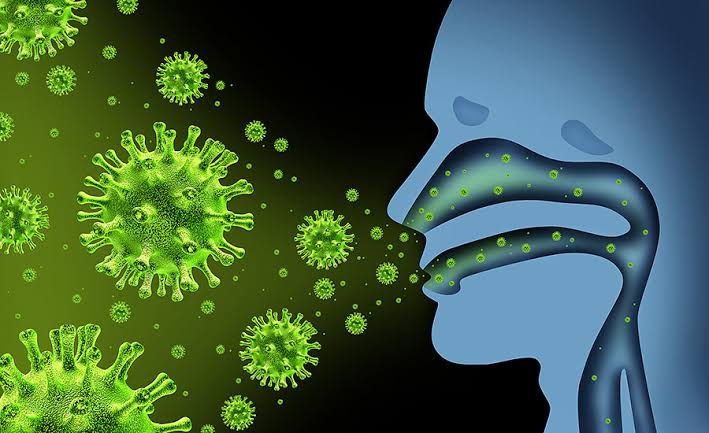The Role of Dopamine in Addiction and Reward Pathways
- thepremedgazette
- Apr 24
- 4 min read
By Serene Inulia Kong Kwai Yan

Dopamine, also known as the “feel-good hormone”, is a monoamine neurotransmitter that affects memory, motivation, movement and mood. It plays a major role in the brain’s mesolimbic system (the “reward centre”). Although often associated with pleasure and satisfaction, dopamine dysregulation is heavily implicated in addiction and substance use disorders.
Dopamine and reward-motivated behaviour
Reward is a natural process where the brain associates stimuli, namely substances, situations or activities, with a desirable outcome, driving an individual to seek a particular stimulus. The brain’s reward system is mostly found in the mesolimbic pathway, which includes the ventral tegmental area (VTA) and the nucleus accumbens (NAc). When engaging in rewarding activities, like learning, socializing or exercising, dopaminergic neurons in the VTA release dopamine into the NAc, reinforcing the behaviour and encouraging repetition.
The reward system is heavily involved in learning habits. In essence, it signals whether a stimulus is to be avoided or approached and prioritizes certain experiences over others. This system evolved in nature to promote survival by motivating “natural rewards” necessary for well-being, like eating, drinking and reproduction. However, drugs of abuse can hijack this system by offering a reward without obvious biological function, causing addiction.
Dopamine, addiction and tolerance
Drugs of abuse, like opioids, cocaine or nitocine, cause dopamine to flood the reward pathway, 10 times more than a natural reward. For example, cocaine blocks dopamine reuptake transporters, leading to prolonged dopamine activity in the synapse. Opioids, such as heroin, inhibit GABAergic neurons that normally suppress dopamine release, resulting in heightened dopaminergic activity. This can powerfully reinforce the connection between consumption of a drug, the resulting pleasure and external cues linked to the experience.
With the chronic use of a substance, the brain’s circuits can adapt and become less sensitive to dopamine. For instance, a key change is the downregulation of dopamine receptors in the NAc. When dopamine signaling becomes blunted, achieving that pleasurable sensation becomes more important, but at the same time, you need more of the substance to generate the high level of dopamine you crave - an effect known as “tolerance”.
Addiction and the resulting compulsive drug-seeking behaviour can cause problems with focus, memory, and learning, not to mention decision-making and judgement. Prefrontal cortex dysfunction in addicted individuals can impair impulse control, making it harder to resist cravings. When drug use is stopped, neuroadaptations lead to withdrawal symptoms. Moreover, environmental cues that have become linked with drug use because of changes to the reward circuit can trigger uncontrollable cravings whenever a person is exposed to those cues, even when the drug itself is unavailable. This “reflex” can last a long time even with people who haven’t used the drug for many years.
Dopamine and non-substance addictions
Just like substance addictions, certain behaviors, like gambling, excessive shopping, internet use, risky sex, excessive eating or exercise, workaholism and an obsession with pornography, can trigger dopamine release and activate the reward system. For instance, the dopaminergic mesolimbic pathway involved in gambling addiction is similar to those in substance-based addictions. Studies using functional MRI (fMRI) have shown that individuals with gambling disorders exhibit neural responses to monetary rewards similar to those of drug users reacting to their substance of choice. This suggests that addiction is not limited to chemical stimuli but can extend to behaviors that excessively stimulate the brain’s reward circuitry.
Although not all of these behaviors are considered bad by today’s standards, there is a fine line between routine and addiction. An easy way to distinguish the two is that anything that negatively affects your daily life, hurts relationships, causes anxiety or makes you feel isolated is likely to be an addiction. Additionally, hiding or lying about compulsive behaviors can signal that it is an issue.
Treating non-substance addiction is difficult because some are necessary for survival in our modern age, like cell phone usage. The key is to set boundaries and alter some behavioral patterns to take back control. For habits where complete abstinence is possible, like risky sex, they should be given up entirely.
Implications for treatment
Treatments for addictions can focus on addressing underlying reward deficits, reducing cravings and helping individuals develop healthier coping mechanisms. For instance, medications like naltrexone and buprenorphine can target opioid receptors to modulate dopamine release, reducing cravings and withdrawal syndromes. Additionally, cognitive-behavioral therapy (CBT) and contingency management strategies help individuals retire reward associations and develop healthier coping mechanisms.
Excessive or insufficient levels of dopamine are linked to Parkinson’s disease, restless legs syndrome and attention deficit hyperactivity disorder (ADHD), to name but a few. Hence, medications targeting dopamine, like dopamine agonists (which mimic dopamine’s effects) and stimulants (which increase dopamine levels in the brain) can be used in treatment.
Conclusion
Dopamine is a fundamental component of the brain’s reward system. While it can enforce survival-related activities, it can be hijacked by drugs of abuse, leading to destructive dependencies. Further research is essential for understanding its role in addiction and developing effective strategies for better mental health outcomes.
Citations
Professional, C. C. M. (2025, March 19). Dopamine. Cleveland Clinic. https://my.clevelandclinic.org/health/articles/22581-dopamine
Lewis, R. G., Florio, E., Punzo, D., & Borrelli, E. (2021). The brain’s reward system in health and disease. Advances in Experimental Medicine and Biology, 57–69. https://doi.org/10.1007/978-3-030-81147-1_4
How an addicted brain works. (2022b, May 25). Yale Medicine. https://www.yalemedicine.org/news/how-an-addicted-brain-works
Drugs and the Brain | National Institute on Drug Abuse. (2025, January 8). National Institute on Drug Abuse. https://nida.nih.gov/publications/drugs-brains-behavior-science-addiction/drugs-brain
Sovani, A. (2020). Nonsubstance or behavioral addictions: Neuropsychological underpinnings and psychosocial interventions. Annals of Indian Psychiatry, 4(1), 5. https://doi.org/10.4103/aip.aip_17_20



Comments